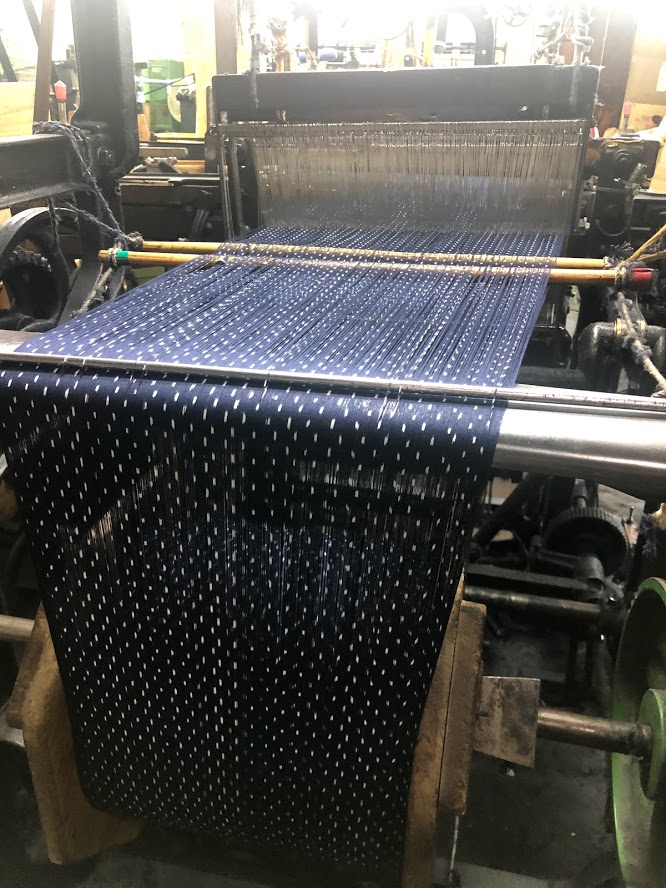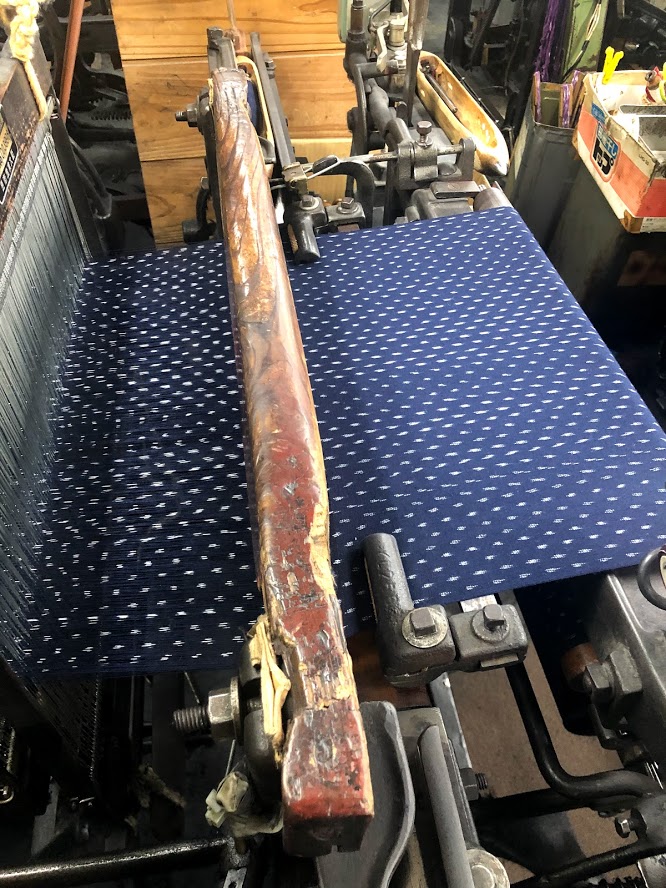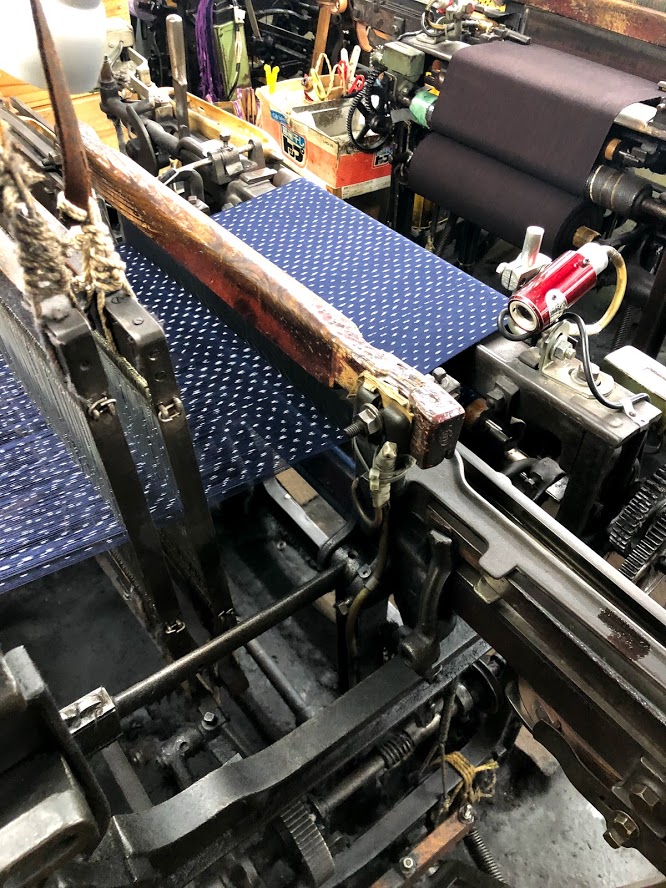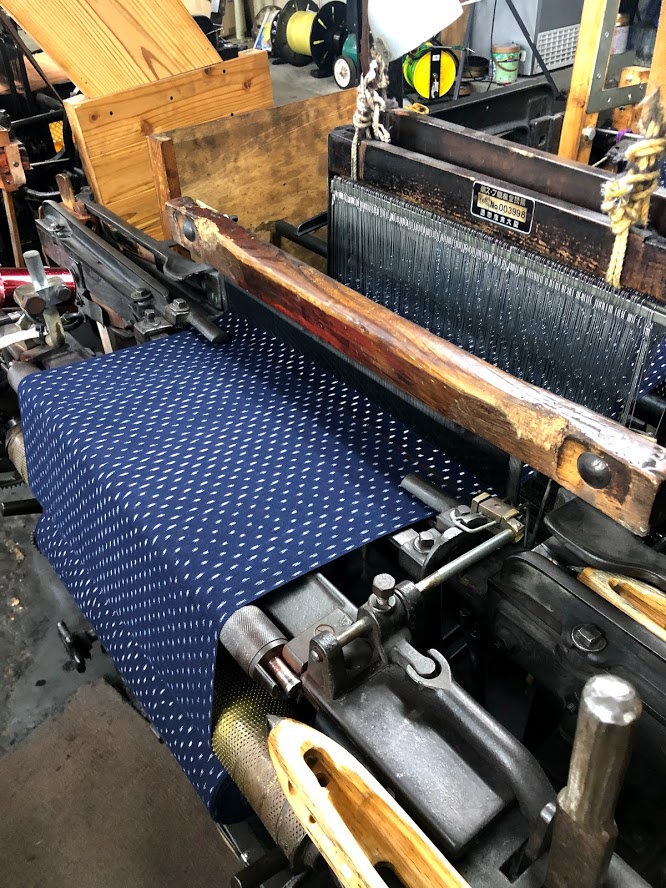
<Specification>
Main technology: Tate-Kasuri(single ikat), power weaving
Warp: 40/2 cotton
Weft: 20/1 cotton
100% chemical dyeing

<Origin>
Until the introduction of the power loom in the early Showa period, all Kurume Kasuri were hand-woven. Small kasuri patterns were already made around 1850 in the Edo period. A lot of petite Kasuri patterns have been made from the indigo dyed vertical and horizontal Kasuri patterns by the ingenuity of many ancestors. It is undeniable that there are few craftsmen who can weave fine and small vertical and horizontal Kasuri fabrics as they were at the time, and that is largely because they are not commercially viable. Therefore, while thinking about the petite pattern at the time, I continue to weave the petite pattern that is suitable for a commercial base using the “Tate Kasuri” technique with a power loom.

<Characteristics of pattern>
The design is a Dot pattern that has the same size and is regularly arranged at the same intervals.
If you look at the pattern actually woven by the Kasuri technique, which uses the Kukuri technique to tie up the yarn to make the pattern stand out by dyeing, you can see that the sizes and intervals of the patterns are subtly different. This is an unpredictable facial expression that is not the result that was intentionally calculated but the result of using the Kasuri technique. From a bird’s eye view of the entire fabric, the balance is in order and there is no discomfort. Kasuri’s true value lies in the “unpredictable and unpredictable shading pattern and expression that cannot be expressed on the design.” As a supplement, I would like to add that there is a method that makes it possible to get closer to the look of the pattern that is more faithful to the design if you make it by ignoring productivity and manufacturing costs. It cannot be neglected that the cost was calculated commercially for distribution to the market and the production method was set.

<Application and development>
When I see this pattern, various thoughts immediately come to my mind.
Color development: It is possible to make the same pattern color difference by dyeing warp and weft in different colors.
Pattern development: Large, medium and small patterns can be changed by changing the Kukuri spacing.
Thickness: By changing the thickness of the thread, you can create a texture that is thin to thick and that matches the sense of the season.

Shimogawa-Orimono
E-MAIL info@oriyasan.com
URL oriyasan.com
instagram http://instagram.com/shimogawakyozo/
facebook https://www.facebook.com/shimogawaorimono
Twitter @kasuritter
Tumblr kyozoshimogawa
YouTube https://www.youtube.com/channel/UCOZennIqkscFGNJLwnTOyKg